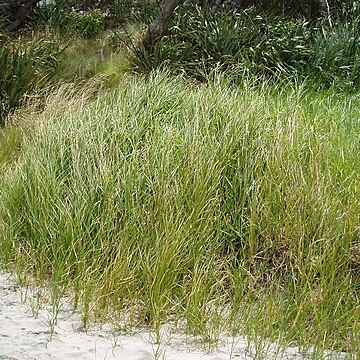Culms 100–200 cm × 5–15 mm. Leaves: sheaths reaching to middle of culm or higher, fronts convex (to concave) and papery at mouth, veins reaching apex, very rarely diverging leaving triangular, veinless, membranous area; widest blade 7–22 mm wide. Inflorescences subumbellate, with all or most spikelets solitary or in clusters of 2–3(–8) on 4–12 rays, rays not exceeding 10 cm; involucral bracts that surpass inflorescences 3–6, widest bract 4–15 mm wide. Spikelets 10–40, ovoid to lanceoloid, 10–25 × 6–10 mm, base cuneate to rounded; scales often loosely imbricate, orange-brown to stramineous, usually obscurely lineolate-spotted, 7–10 × 3–4 mm, membranous and translucent, apex 2-fid 0.5–1 mm deep, awns fairly stout, 2–3 × 0.5 mm wide at base. Flowers: perianth bristles tightly attached to shed achene, pale brown, very stout, equaling achene; anthers yellow, 4 mm; styles 3-fid. Achenes grayish or dark brown, often in patches, obovoid to obpyriform, all nearly equilaterally markedly trigonous to slightly compressed, angles equally rounded, 3.8–5.5 × 2–2.9 mm, apex rounded, beak 0.2–0.8 mm, surface rather dull, exocarp cells usually not evident at 20X; in cross section exocarp much thinner than mesocarp and its cells very small, isodiametric; achene specific gravity greater than water. 2n = 94.
More
A sedge or rush which keeps growing from year to year. It has a thick underground stem or rhizome. These grow in clumps and have grass like leaves and solid stalks. It is creeping and forms tubers. The leaves are long and tapering. They are 30-50 cm long and 4-15 mm wide at the base. The stem is 3 sided. It is 1-1.5 m tall. It has leaves along its length. The flowering head is open and has leaf like bracts underneath it. These are longer than the flowering head. The spikelets have many flowers. They are oval and 2.5 cm long. The flower has 6-9 rays with the outer ones larger and getting smaller towards the centre. The flowers contain both sexes. The nut is 3 sided and 4 mm long.

